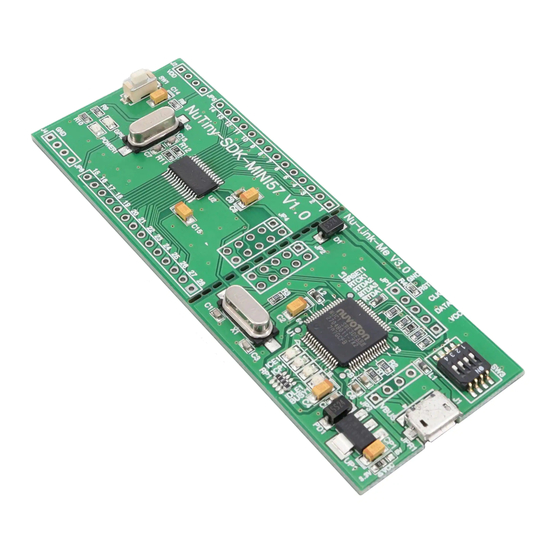
Nuvoton NuMicro Family Manuals
Manuals and User Guides for Nuvoton NuMicro Family. We have 1 Nuvoton NuMicro Family manual available for free PDF download: Technical Reference Manual
Nuvoton NuMicro Family Technical Reference Manual (475 pages)
Brand: Nuvoton
|
Category: Microcontrollers
|
Size: 5 MB
Table of Contents
-
Features13
-
TSSOP 28-Pin20
-
TSSOP 20-Pin21
-
QFN 33-Pin22
-
Overview40
-
Features40
-
Overview42
-
System Reset42
-
Register Map58
-
Clock Controller113
-
Overview113
-
Auto Trim115
-
Register Map120
-
Overview133
-
Features133
-
Block Diagram133
-
Register Map150
-
Overview162
-
Features162
-
Block Diagram163
-
Register Map167
-
Overview187
-
Features187
-
Block Diagram188
-
Register Map196
-
Overview209
-
Features209
-
Block Diagram209
-
Register Map214
-
Overview225
-
Features225
-
Block Diagram226
-
Register Map247
-
Overview275
-
Features275
-
Block Diagram275
-
Register Map284
-
Overview295
-
Features295
-
Block Diagram295
-
Clock Control296
-
Registers Map298
-
Overview301
-
Features301
-
Block Diagram301
-
USCI - UART Mode313
-
Overview313
-
Features313
-
Block Diagram313
-
Register Map324
-
USCI - SPI Mode346
-
Overview346
-
Features346
-
Block Diagram347
-
Register Map361
-
USCI - I C Mode384
-
Overview384
-
Features384
-
Block Diagram385
-
Status392
-
Register Map403
-
Overview422
-
Features422
-
Register Map424
-
Overview430
-
Features430
-
Block Diagram430
-
Register Map435
-
Overview452
-
Features452
-
Block Diagram453
-
Register Map456
-
Overview467
-
Features467
-
Block Diagram467
-
Register Map467
-
Revision History474
Advertisement
